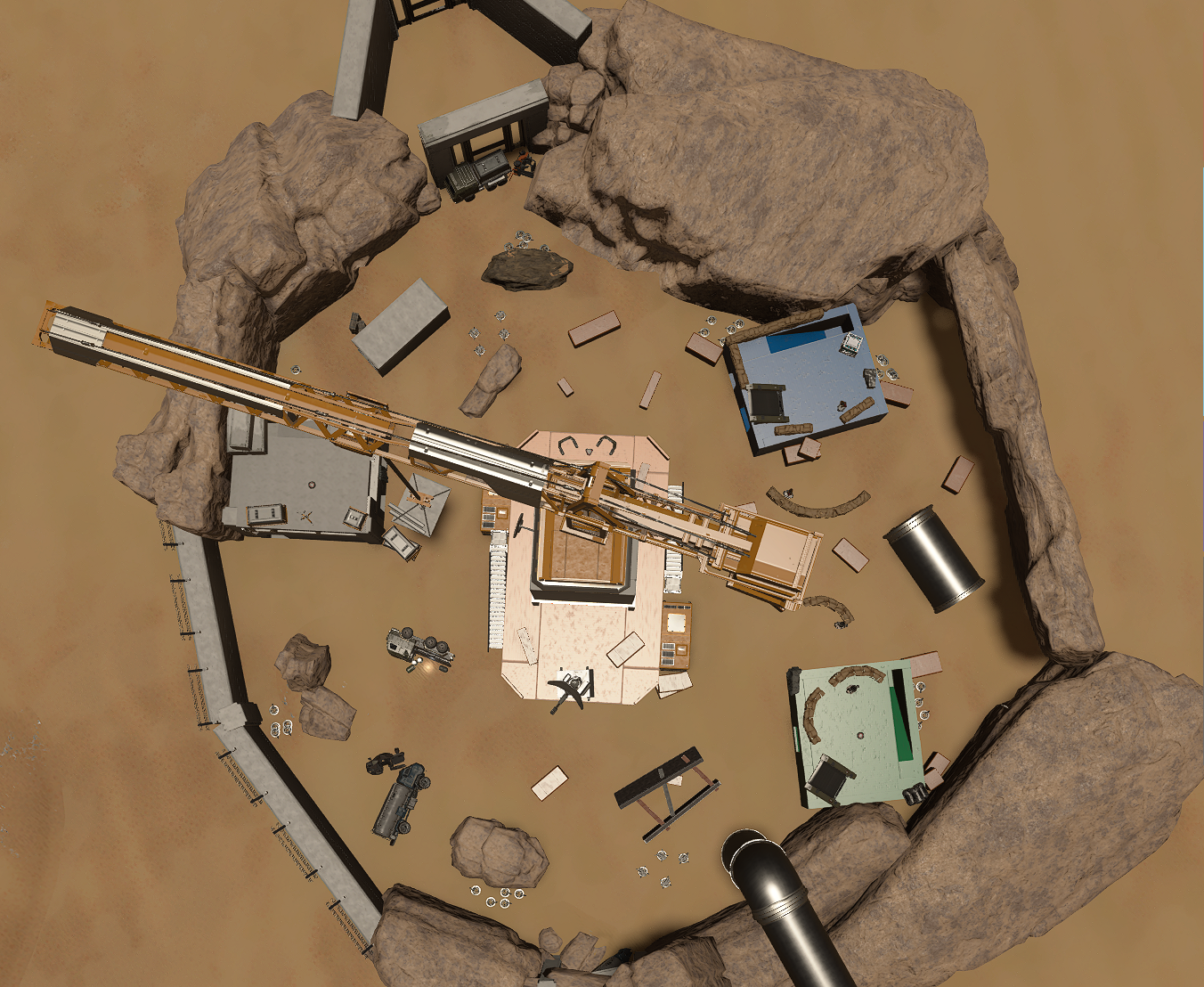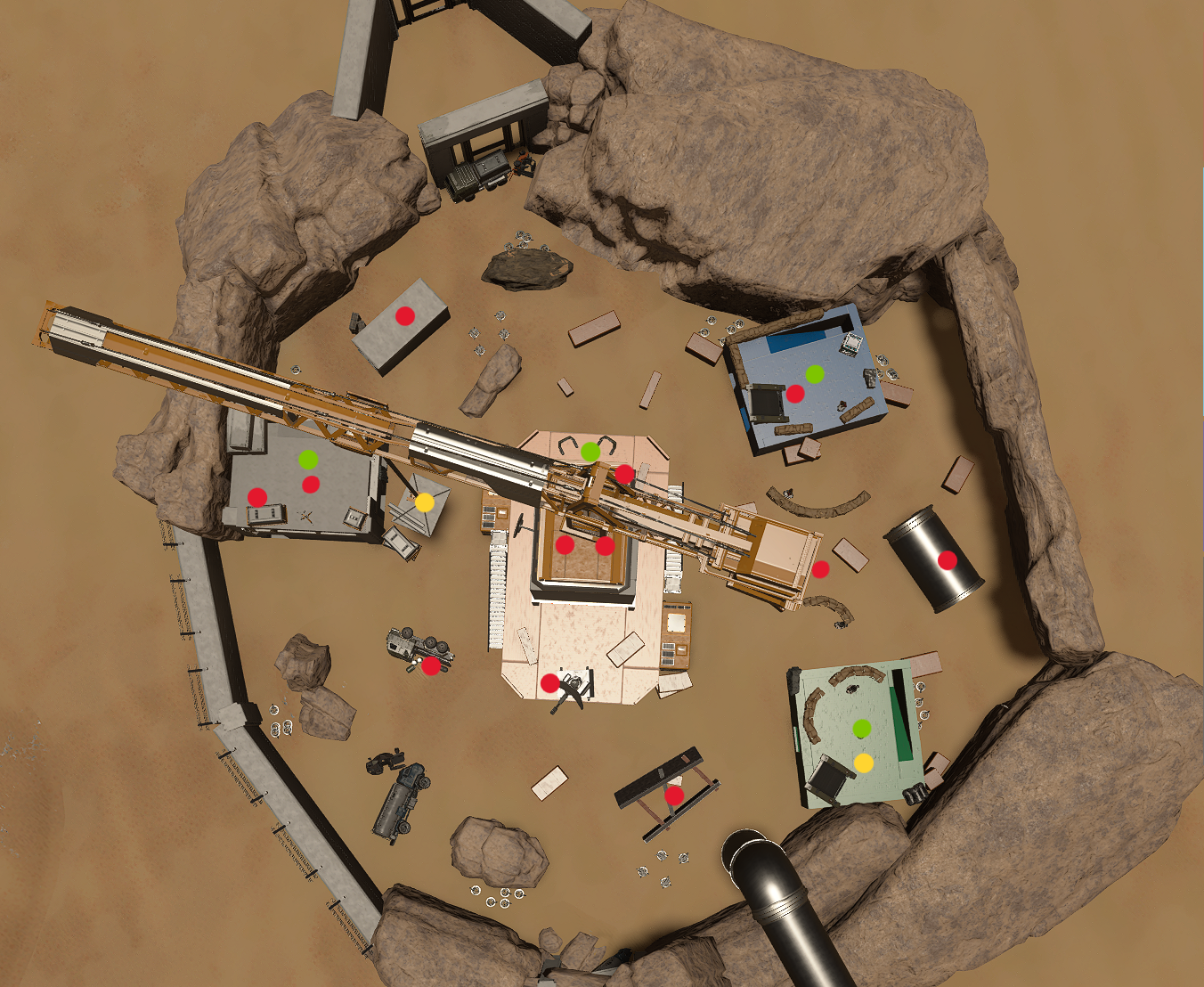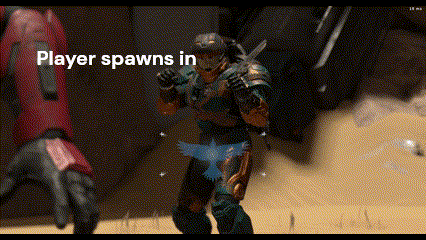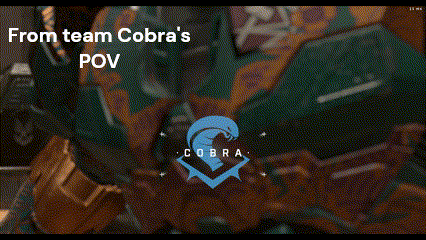Type of Project: Personal Solo | Role: Level Designer Size: Independent | Duration: 8 weeks | Year Created: Early 2024 | Software: Halo Infinite Forge
Crane
Overview
Started as a passion project on the last day of junior year winter break, with an initial 8-hour work session.
Focused on making bots functional before refining the map through playtesting with real users.
First official multiplayer PVP map, developed through multiple iterations.
Initially planned as a tactical slayer-only map but pivoted to a different style and game mode.
Chose to challenge myself by designing for a mode I wasn’t proficient in as a player.
Integrated equipment and weapon spawners to expand gameplay mechanics.
Planning
Started with only walls, taking a different approach by focusing on environmental theming first.
Concept: A half-finished UNSC forward base on a Halo ring, repurposed for Spartan squad training.
Loosely followed project specs from a level design class (originally for 2v2 Slayer or 4-person FFA).
Expanded scope to a 6-person FFA with 3v3 Slayer support to work with a larger map.
Defined weapons, grenades, and equipment early in development.
Created a rough layout plan with three distinct callout areas.
Designed for short to medium-range combat to balance 3v3 and 6-person FFA gameplay.
Planning and Playtest Documents
FFA Slayer Playtest
3v3 Slayer Playtest
Lanes and Map Flow
Designed for short to medium-range combat while supporting long-range engagements.
Primary focus on free-for-all, with fast-paced team deathmatch support.
Implemented an inner and outer circle lane layout with a grid to enable easy player rotation and prevent corner trapping.
Ensured each building had at least three entrances/exits (doors or jumpable windows) for fluid movement.
Aimed for a 2-3 second time-to-engagement to create fast-paced combat, inspired by Shipment and Rust from Call of Duty.
Team Slayer Spawns: Eagle and Cobra spawns are diagonally offset with cover, providing multiple movement lanes.
Spawn Flexibility: Players can rotate to outer lanes via windows and doorways, increasing strategic options.
Anti-Spawn Camping Measures:
Spawns are accessible to both teams but prioritize initial sides.
Dynamic spawns allow teams to switch sides if the enemy is nearby, preventing predictable spawn locations.
Every spawn offers at least two movement paths to maintain player agency.
FFA Spawns:
Additional spawns on the outskirts ensure players can enter from all points.
Reduces time to engagement and prevents spawn camping in FFA matches.
Equipment and Weapon Placement
I placed the weapons along the lanes of the map for easy access to the different weapons in the map.
Weapons were placed with initial spawns in mind allowing players to immediately grab a new weapon!
Likewise grenades were also placed with the lanes in mind to create ease of access.
Supporting Team Play
In the early stages of map creation, I planned for there to be specific locations that players would be able to use as callouts to reinforce strategic gameplay and enhance map flow. I did this by use of color and visual attributes. As seen on the image to the left, I made each building have its own signifier to make it stand out from the rest.
Construction/concrete building on the left, crane in the center, then blue and green buildings on the right. This way players can specifically point out to teammates where enemies are and easily memorize the map layout to get to their favorite weapons and positions.
Red Dot = Weapon | Green Dot = Grenade | Yellow Dot = Equipment
Playtesting and Iteration
Playtesting Process: Conducted around seven playtests across multiple modes with different user groups.
Feedback-Driven Iteration: Changes were only made after testing, based on user feedback, suggestions, and personal observations.
Power Weapon Addition:
Initially had no power weapons, believing it fit the map’s goals.
Playtesters suggested adding one to create a central point of conflict.
Added the Skewer and Hydra in open areas to encourage fights over them.
Impact of Changes:
Players frequently gravitated toward power weapon locations in both FFA and Team Slayer.
Adjusted weapon placements to fit existing lanes and improve map flow.
FFA Slayer Playtest
3v3 Slayer Playtest
Ending Notes
Learning Outcomes
I learned that when working on a personal project to bring people in sooner. The more eyes that can get on a project, especially with a multiplayer one, the better it will do. It was odd for me to feel hesitant with the project when every other project I had worked on I had no issue throwing it to the metaphorical wolves but this one I did. I am happy I had that experience because it pushed me out of my comfort zone with a project that was close to self which only made me a better designer. Being able to let go of your own fears when it comes to projects, whether personal or professional (or a mix of both), enables you to enter into a place that allows you to surpass what you thought was possible in your own works.
On a less philosophical note, I also learned through this project that I was able to go through the workflow of making a successful player map of decent size. I was able to translate my workflow from single-player and non-FPS-style games to this project to make a map that users enjoyed playing on in multiple modes. Moreover this project helped me overcome some unseen issues I had as a designer and prove my competence in PVP map design.
Complications/Issues
The primary complications I had were parsing through feedback from testers and dictating which feedback aligned with the experience I wanted players to have. As well as the issue that players found the map worked better as a FFA map. I decided to lean into that and make it primarily an FFA map since the layout worked better for that type of gameplay. But I also tried to make it a balanced experience for players when in 3v3 team slayer, and according to playtest feedback that was generally achieved. I also found myself in the early stages wanting to shy away from playtesting.
This project was a personal one, so I naturally had a bit of an attachment to it. I thought this map was awesome and I even enjoyed playing on it with bots for fun. Which made me hesitant to show it to other people. But once I did, I was happy I trusted my instructors and my gut instinct since the feedback I received made this map better in every way to its original self. Albeit through small tweaks and changes, that makes a product go from good to great.











